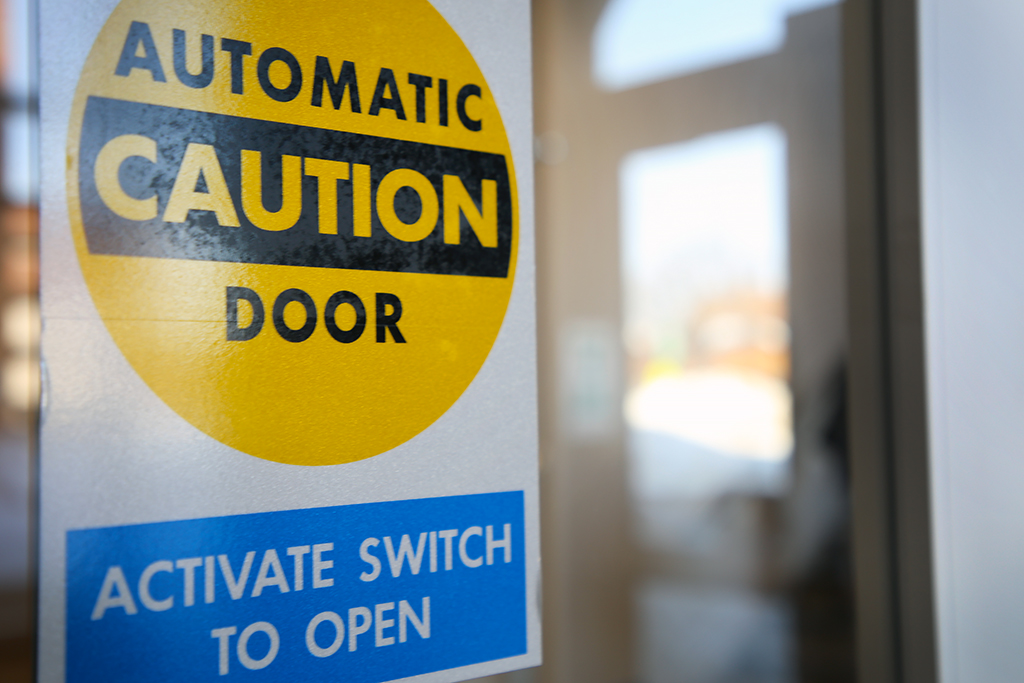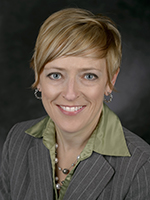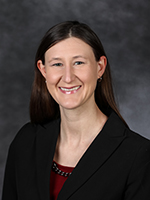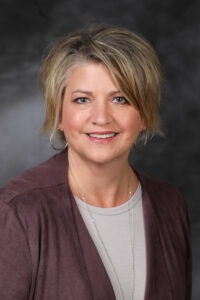Teams join forces to make campus more inclusive for all
Campus Accessibility Working Group tackles barriers to learning

As the country celebrates its 36th National Disability Awareness Month this March, UND leaders are paying attention now and all year round.
UND Today recently sat down with three of those leaders — Donna Smith, Sara Kaiser and Beth Valentine — to hear how one influential group is working hard to create an even more welcoming, safe and inclusive community for all.
Smith, assistant vice president for Equal Opportunity & Title IX and ADA/504 coordinator, co-chairs what’s now called the Campus Accessibility Working Group. Valentine, equity and compliance education manager and deputy ADA/504 coordinator, is Smith’s fellow co-chair.
“When some of us first started the precursor to CAWG in 2016, our initial focus was primarily on digital accessibility,” Smith said. “We were examining all of our digital materials. What do our websites look like across campus? Are we providing appropriate captioning for our faculty lectures? What are we doing during the procurement process to review the accessibility of nonstandard software?”
The comprehensive digital review and transformation was a heavy lift, but it eventually resulted in the University’s first Digital Accessibility Policy in 2020. The policy provides campus members with both guidelines and resources for ensuring digital content is accessible to people of all abilities.
Getting everyone on the same page
“We spent a lot of time on captioning services and made a lot of progress,” Smith said. “But we still have some work to do. There’s just so much digital material out there, and it takes some time to go through it.”
Plus, achieving widespread buy-in and participation doesn’t happen overnight, she said. It involves new resources, new training and support.
Recognizing that challenge, others across campus stepped up.

“We had people doing some great physical disability work and others developing training. It was all wonderful, but everybody was kind of doing their own thing,” Smith explained. “We weren’t necessarily doing it in a cohesive kind of way.”
And that’s where CAWG — an apt acronym for a group that’s become an important cog in the wheel of equity and inclusion — came into play. Last year, the original group adopted the new name and reorganized to reflect a much broader accessibility mission.
The expanded Campus Accessibility Working Group now includes active subgroups and accessibility chairs in several important areas of expertise, including assistive technology, employee education, physical accessibility, software accessibility and procurement, as well as universal design in learning.
Through coordinated efforts, the team is regularly working to ensure people with disabilities are experiencing all UND has to offer as fully, equally and independently as people without disabilities.
Not all differences are easy to see
But what happens when someone’s disability isn’t as easy to see? What if they don’t want to seek out an accommodation on their own?
“Sometimes when we talk about diversity, the inclusion part can get left out for people with disabilities,” said Kaiser, director of UND’s Office of Student Rights & Responsibilities and Disability Services for Students. “That’s why we stress that everyone has value, and everyone’s experiences have value. We’re here to support that by making sure everyone can have the positive experience they deserve and expect to have at UND.”

Kaiser acknowledged that delivering an equitable experience for all can be complicated, especially when 70 percent of the students who get support through her office have what she calls invisible disabilities. Further, national statistics say 10 percent of college populations have disabilities, yet she knows her office is not serving 10 percent of UND’s students.
“You can’t always recognize that someone has a learning disability, PTSD, severe anxiety or severe depression,” Kaiser said. “Those psychological or neurological differences that are unseen, or invisible, sometimes can make it really hard for other people to understand why that student might not feel included.
“Because people can’t see their difference, they can’t see the way in which that student is being excluded. It’s our work to try to support those students. That difference may not always be seen, but that difference is always valued.”
Make it universal
Kaiser, Smith and Valentine say perhaps the best way to knock down the different barriers to learning is to make sure they’re not there in the first place.
That may be easier said than done, but one way to achieve that is through the concept of universal design in learning.
“It’s a philosophy that focuses on making everything accessible and equitable on the front end,” Kaiser explained. “It adapts to different learning styles without having to make the ‘one-off’ accommodation when a student requests it.”
For example, when a professor who embraces universal design shows a video in class, that video already meets the accessibility standards of the Americans with Disabilities Act.

“The captioning is already done. It’s embedded in the video, and it’s 99 percent accurate. The student doesn’t have to come to my office to request an approved accommodation to get captioning so they can get the same instruction as everyone else,” Kaiser said. “With universal design, captioning and other accessibility standards are already taken into account. It’s all done on the front end, so the student isn’t the one who must break that barrier.”
True, she acknowledged, it can be a heavy lift for faculty to have a “fully immersed, universally designed course, but by doing so, it reduces barriers for all students. It allows all students to show their capability of mastering the material in different ways.”
Universal design may look different in an English course vs. a science lab, but that’s the key. It includes enough built-in options to adapt to all learning styles. For example, it could mean providing students with the choice of using either a paper textbook or an e-textbook — so a student who has a visual impairment can listen to the text. Additionally, students who may comprehend material better by hearing vs. reading can benefit. Or, it may mean uploading an exam to Blackboard in a way that makes it accessible via audible screen readers.
“It’s all about designing our learning, physical spaces and experiences so they work and are helpful to a wide range of people, whether they have a disability or not,” Smith added.
Valentine echoed that thought, saying that “it’s so important for us to provide a learning environment where students don’t have to ask for those modifications and approved accommodations.
“Even though we can do a fantastic job working with students on individual accommodations, we’re still making that student take that extra step,” Valentine said. “If we can get rid of some of those extra hoops they need to jump through, we can make their learning experience that much better.
“If we truly want inclusivity and belonging, that’s where we need to be. It shouldn’t be an afterthought. We shouldn’t need to do all sorts of individual modifications. When that’s already built into the course, we’re saying, ‘We thought about you, and you’re welcome here.’ That student belongs in the space or the class just as much as anyone else.”
So, what part can you play?
The trio say the biggest way people can help improve accessibility is to recognize that it really is everyone’s responsibility. If you notice an automatic door isn’t functioning, report it. Likewise, if you notice an icy patch was missed on the sidewalk. (Below, you’ll find more information on how to report such concerns.)
“It really requires all of us on campus to be looking out for each other,” Smith said. “We all share in that responsibility to help create an environment that’s accessible and inclusive. If you recognize something might be a barrier, please don’t just walk past it and ignore it.”
UND’s Teaching Transformation & Development Academy (aka TTaDA) will be hosting an online panel discussion about campus resources for UND students and employees with disabilities from 10 to 11 a.m. Wednesday. You can register to attend and/or receive a link for the recorded discussion.
An Accessibility Best Practices Workshop also is planned from 2 to 3 p.m. April 6 in O’Kelly Hall, Room 343. Participants may take part in person or via Zoom. Registration is open through 1 p.m. April 6.
Following are more tips and information to help you be a part of the positive change for creating better accessibility for all.
SAY SOMETHING ABOUT IT: If you have any concerns about snow removal or physical access, click on the SafeUND web page. There, you’ll find easy links not only for reporting your concern but also for courtesy transportation for those with mobility concerns.
BE INFORMED: Learn more about your rights and what’s available for disability support through the Equal Opportunity & Title IX Office and its ADA coordinator. The web page addresses support services for employees, students and visitors, as well as includes information on everything from maps showing accessible entrances and restrooms to how to request a workplace disability accommodation.
THINK AHEAD: When you’re planning an event on campus, be proactive and follow best practices to make it enjoyable and accessible to all.
REACH OUT: Make yourself familiar with the Campus Accessibility Working Group. You’ll find links to the co-chairs as well as the chairs for assistive technology, employee education, physical accessibility, software accessibility/procurement and universal design in learning. (They always welcome new members.)
LEARN MORE: Read how universal design for online learning can provide anytime, anywhere access to not only people with disabilities but also children, older adults and novice technology users.
CLICK THE BUTTON: Did you know all sorts of accessibility tools are already at your fingertips? When working in Word, you can click on the “Accessibility” icon at the bottom of your Word window to learn if your document has any accessibility barriers. For instance, if you used red text, it will alert you that some readers could have difficulty discerning contrast with that color. The same flight check is available in Outlook for emails. There, you must be in a New Email window and first click Review to see the Check Accessibility option at the top. Both email and Word documents also will give you additional links to more tips.
REMEMBER, PEOPLE FIRST: The Centers for Disease Control and Prevention offers some valuable tips on using people-first language when communicating with and about people with disabilities.
“I think as a whole, the University, the employees, the people who make up this place, really want to do what’s right. They want to make this place welcoming and inclusive for all,” Kaiser said.
“But on the flip side, our biggest barrier to action can be our own lack of confidence. It’s scary to get started and take that risk to try something new. We need to stop worrying about being perfect at the start, and instead, just take that first step. We can fumble together, but we need to take that first step.”



